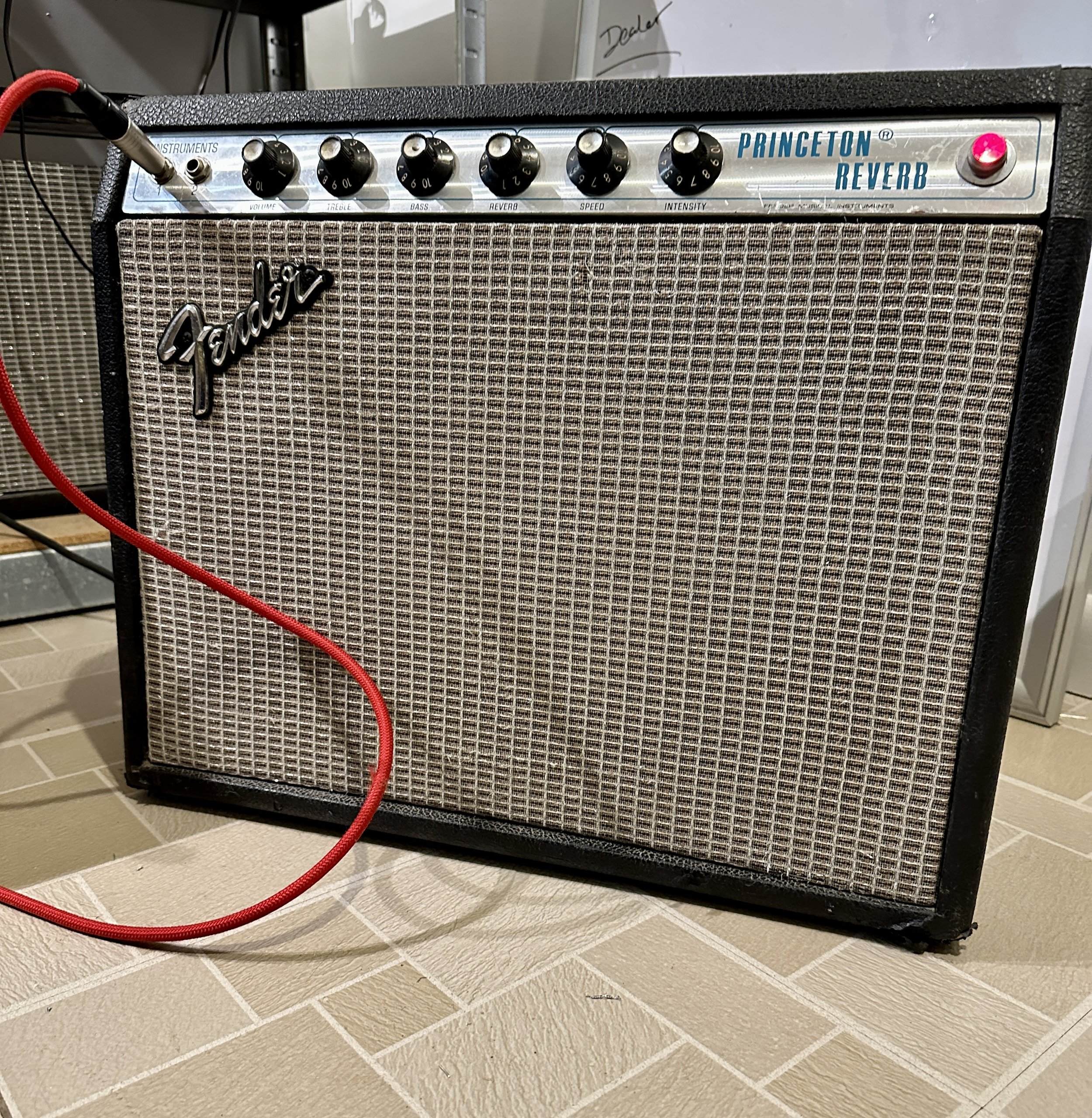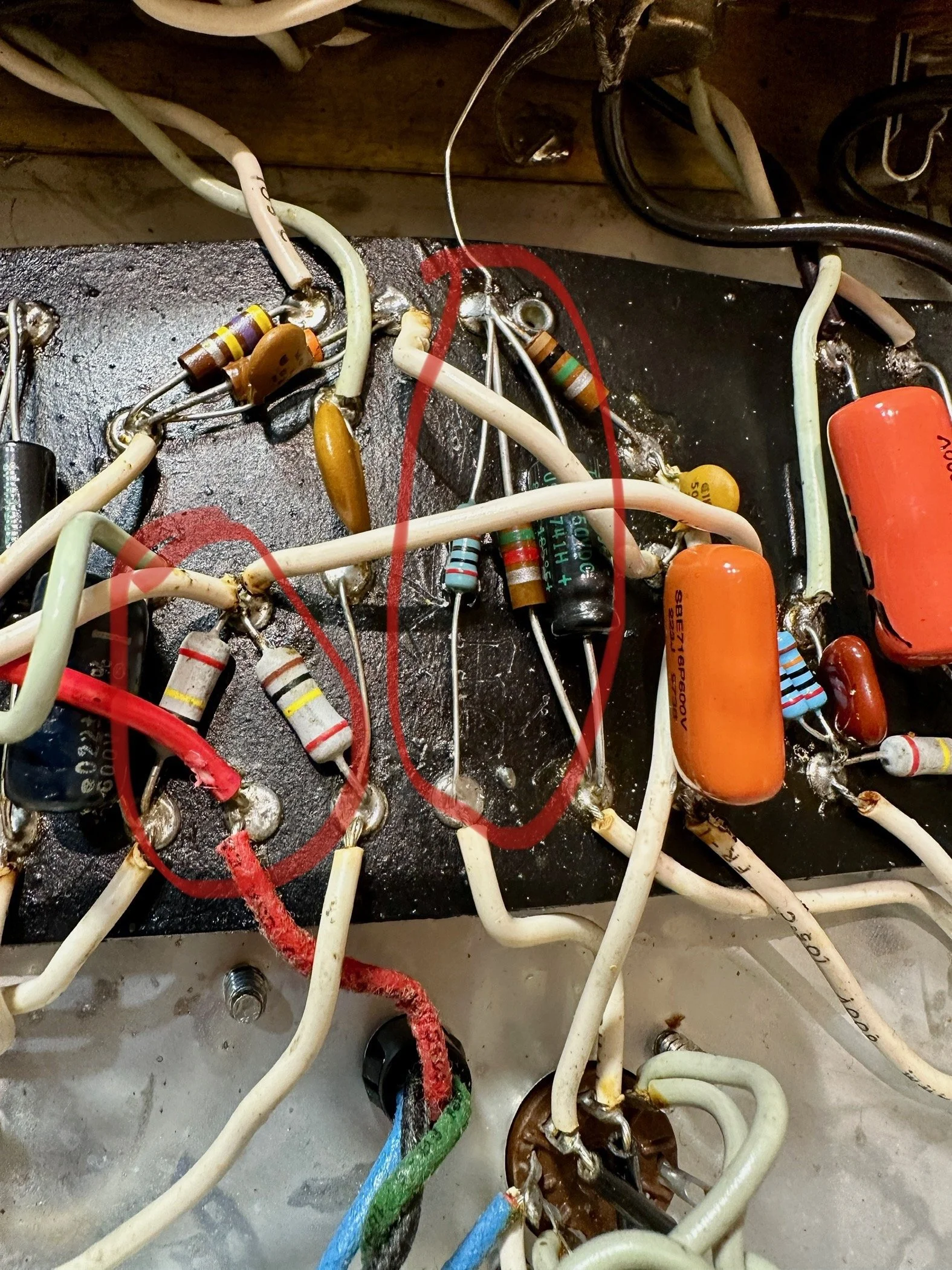The 1977 Princeton Reverb Repair Part 1
Part 1
A couple weeks back a local customer emailed me regarding a Lil King S he had acquired on the used market in the Asheville area. It was an easy fix, but it had a changed cab and a few other things done to it. NO matter, I got that thing fixed right up for his next session! I will cover that one in a future post. He mentioned that he had a 1977 Princeton Reverb that had been acting up and when I met him to pick up his S he brought the PR with, so I could have a look. I was hoping from the description, it would be an easy tube swap or solder joint touch up, “Sounds great for an hour then drops volume and or reverb fades”, you know, boilerplate, my old amp isn’t working right stuff.
I don’t normally do repairs, but if it is a vintage Fender, especially a Princeton Reverb (PR), I will do the work…mainly because I have all the parts on hand to build a new one, so a repair is usually pretty straight forward. Also, I love to hear the old ones as they are usually all a bit different. Some of this is obviously based on the work that has been done to them over the decades, and also, the production process back then was not the most consistent, supplies could change, multiple people building the amps, etc.
I was also thinking I could test this amp out against Lil King (LK) #700 that I had just finished up for Deke Dickerson. Once I got it in the shop, I turned it on to burn it in and see if I could replicate the issues. Sometimes these intermittent issues can be the hardest things to track down. I’d rather have an amp that won’t turn on or has a smoked resistor…Intermittent usually means you’ll hear something along the lines of “it’s working fine here on my bench” back from your amp guy…Then maybe a bench fee, and you take it home, with a emotional cocktail of hope and skepticism…To turn that damn thing on, and then almost immediately, it does the thing again!!!
Back to the tech, repeat and so on…it is NO fun for anyone involved. I know what both sides feel like…in my other posts I have referenced this, take it to a tech and not know what it will sound like when it comes back…Even when it is just some new tubes…it’s agonizing as a player…and as a consumer!
I, of course didn’t hear any of the volume drop or cutting in and out. Jacks seemed fine, tubes seemed fine…I had not even opened the amp up yet, just plugged in and listened. I always try to approach it as a player first…Play the thing and LISTEN. Well I a/b’d it briefly with #700, using a long speaker cable from my bench, I plugged the LK into the PR cab with the (seemingly) original 10” speaker as well as into the bench LK Cab that has a well broken in Alessandro GA-SC64 speaker. First thing I noticed…man the PR was really bright and edgy on the top end and upper-mids…through both speakers. The reverb was also way off…cranked to 6 it wasn’t as present as the LK on 3…There was definitely something off. The LK was way warmer and more responsive…I am confident in the job I do replicating these old Fender’s and that the 70s ones are generally considered “close” to “ok but a little bright” but this was a ways off…This was not a fair way to compare…and Deke was ready for his amp. I decided the a/b test at least in terms of playing would need to wait so I could inspect the 77 and ship Lil King #700 out west.
Opening up the chassis really filled me in on what was going on
There was obvious work done inside, some good, some not so good, the reverb issue was because someone omitted the bypass cap on the reverb driver tube (v2 12AT7)…this was why it didn’t have the lush wash out of a normal Fender reverb. Also, there were quite a few metal film resistors (very stable voltage wise) in key spots, and honestly, in completely random spots as well
The Plate resistors on the pre-amp tubes are the ones you may have heard or heard about, the term, popping, cracking, sizzling or a combination of any of those when they go bad…seeing these replaced is pretty common. I have my beliefs on this, and there are MANY more, most, by guys that probably know more than me about electronics and very likely, everything else…But I do know that in the pre-amp plates, that is where this carbon composition resistors shine for tone, you want the voltages to drift…that is what the old amps did…SO that was the first order.
I assume they didn’t have some of the common values for Fender amps…btw, if a tech tells you he doesn’t stock say a 100k 1/2 watt resistor, he probably doesn’t work on many Fender amps. You may need to seek a second opinion for the repair. To remedy not having the a few 100k’s, and a couple 56K’s he just wired two resistors together to attain the value needed. I replaced all of that with the 1/2 Carbon Composition type to get it as close as I could back to stock
Stay tuned for part 2 and maybe 3 if it is needed…Next we get to the power tubes, rectifier tube and check out the differences between the 64-67 and this 1977 Princeton Reverb
NEXT WEEK:
“The missing bypass cap may have been intentional. The work was not subpar, it may have been a “fix” for the washed out reverb that happens on Fender amps above 4, generally speaking. I had never thought of that one, so there again, someone knew what they were doing, electronically speaking…. “




